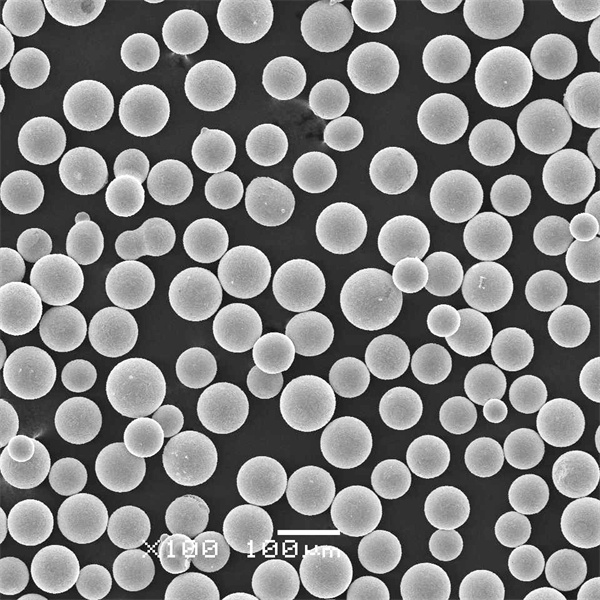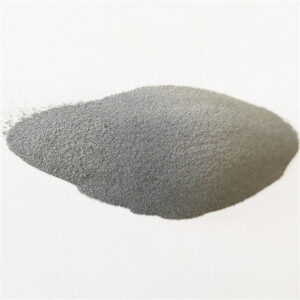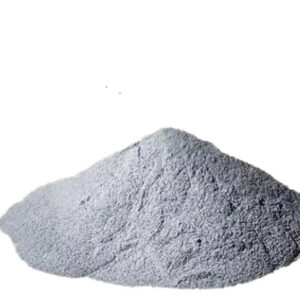Paduan nikel mengacu pada berbagai macam bahan tahan panas dan korosi di mana nikel membentuk lebih dari 40% komposisi. Panduan ini memberikan gambaran umum tentang berbagai bubuk paduan nikel jenis, metode pembuatan, aplikasi utama, spesifikasi, harga, perbandingan, dan pertanyaan yang sering diajukan untuk pengadaan.
Komposisi Bubuk Paduan Nikel
| Keluarga Paduan | Elemen Paduan Utama | Nilai Umum |
|---|---|---|
| Superalloy | Cr, Co, Mo, Ti, Al | Inconel 718, 625, Haynes 282 |
| Paduan suhu tinggi | Cr, Mo, W | Haynes 230, 188, HR-120 |
| Tahan korosi | Cr, Mo | Paduan C-276, 20Cb-3, G-35-1 |
| Listrik / Elektronik | Fe, Cu, Cr | Paduan 42, Kovar |
| Memori bentuk | Ti, Hf | Nitinol (NiTi) |
Berbagai elemen paduan seperti kromium, kobalt, besi, tembaga, dll. ditambahkan untuk menyelaraskan sifat mekanis, meningkatkan fabrikasi, dan meningkatkan ketahanan terhadap korosi dan keausan.

Karakteristik Utama dan Sifat Serbuk
| Atribut | Nilai-nilai Khas |
|---|---|
| Bentuk partikel | Bulat |
| Kisaran ukuran | 10 - 150 mikron |
| Oksigen ppm | Di bawah 500 ppm |
| Laju aliran aula | Sekitar 25 detik untuk 50g |
| Kepadatan yang tampak | 2 - 5 g/cc |
| Oksida permukaan | Film kromia pasif tipis |
Karakteristik partikel disesuaikan dengan metode produksi - manufaktur aditif membutuhkan serbuk bulat di bawah 100 mikron, sedangkan semprotan dingin lebih baik dengan partikel yang lebih besar.
Metode Produksi untuk Bubuk Paduan Nikel
| Metode | Deskripsi |
|---|---|
| Atomisasi Gas | Gas inert menghancurkan logam cair menjadi bubuk tetesan |
| Atomisasi Air | Air bertekanan tinggi memecah aliran lelehan |
| Atomisasi Plasma | Sangat bersih, volume produksi kecil |
| Proses Karbonil | Pengendapan kimiawi dari nikel karbonil |
Atomisasi gas paling cocok untuk paduan reaktif seperti superalloy, titanium, dll. Atomisasi air lebih ekonomis untuk volume tinggi di atas 30 mikron. Atomisasi plasma dan rute karbonil menghasilkan serbuk khusus.
Aplikasi dari Bubuk Paduan Nikel
| Industri | Komponen Umum |
|---|---|
| Dirgantara | Bilah turbin, cakram, transisi |
| Minyak & Gas | Peralatan kepala sumur, katup, pengencang |
| Otomotif | Bagian sistem pembuangan, sel bahan bakar |
| Proses Kimia | Penukar panas, bejana reaksi |
| Medis | Implan, alat bedah |
| Manufaktur Aditif | Komponen bi-metal, kisi, desain yang dioptimalkan untuk topologi |
Paduan nikel melayani aplikasi kritis yang membutuhkan kombinasi kekuatan tinggi dan ketahanan korosi pada suhu tinggi.
Spesifikasi untuk Bubuk Paduan Nikel
| Standar | Deskripsi |
|---|---|
| ASTM B162 | Spesifikasi tingkat pelapisan nikel |
| ASTM B214 | Strip nikel berpori |
| ASTM B351 | Bentuk produk superalloy tempa |
| ASTM B777 | Paduan nikel metalurgi serbuk (PM) |
Tidak ada spesifikasi serbuk universal. Aplikasi dan metode produksi yang dimaksudkan justru menentukan norma-norma penerimaan.
Pemasok dan Harga Bubuk Paduan Nikel
| Vendor | Waktu tunggu | Kisaran Harga ($/kg) |
|---|---|---|
| Sandvik Osprey | 10-16 minggu | $25 – $500 |
| Peralatan Atlantik | 12-18 minggu | $30 – $450 |
| TLS Technik | 16-20 minggu | $35 – $480 |
Harga sangat bervariasi tergantung pada komposisi paduan, jumlah bubuk, kisaran ukuran dan tingkat kualitas yang ditentukan.
Pro dan Kontra dari Bubuk Paduan Nikel
| Kelebihan | Kekurangan |
|---|---|
| Kekuatan tinggi pada suhu tinggi | Bahan baku paduan yang mahal |
| Tahan terhadap lingkungan yang keras | Pemasok dan ketersediaan yang terbatas |
| Paduan khusus untuk properti yang disesuaikan | Prosedur kualitas yang ketat untuk memastikan kemurnian |
| Metode produksi yang fleksibel | Bahaya keselamatan dengan serbuk logam halus |
| Bentuk yang kompleks dari teknologi AM | Pemrosesan pasca sering kali sangat penting setelah pembuatan AM |
Serbuk paduan nikel memungkinkan fabrikasi komponen berkinerja tinggi tetapi membutuhkan keahlian yang signifikan untuk memproduksi dan menangani dengan aman.

PERTANYAAN YANG SERING DIAJUKAN
Apa perbedaan antara superalloy, paduan suhu tinggi dan paduan tahan karat?
Superalloy memiliki kekuatan tertinggi berkat penguatan endapan prima gamma. Paduan suhu tinggi mengalahkan oksidasi. Paduan stainless fokus pada ketahanan terhadap korosi.
Kisaran ukuran partikel apa yang paling sesuai untuk pencetakan binder jet?
Sekitar 20 hingga 50 mikron dibutuhkan untuk proses pengikatan. Serbuk yang terlalu halus menghambat kejenuhan cairan dan penyebaran pengikat. Pastikan distribusi yang sempit untuk kepadatan kemasan.
Apa yang menyebabkan kontaminasi selama atomisasi?
Pengambilan oksigen dari udara menyebabkan inklusi oksida. Kehilangan elemen kecil karena penguapan mungkin terjadi. Sumber lainnya adalah pelapis tundish, cawan lebur. Gunakan gas inert dengan kemurnian tinggi dan bahan awal.
Mengapa bubuk yang dikabutkan dengan gas lebih disukai daripada yang dikabutkan dengan air?
Atomisasi air menyebabkan pengambilan oksigen yang menurunkan kualitas bubuk. Laju pendinginan lebih lambat yang mengarah ke jaringan karbida yang menurunkan ketahanan korosi. Hindari untuk paduan reaktif.
Apa saja cacat yang umum terjadi saat mencetak paduan nikel?
Kurangnya cacat fusi karena kepadatan energi yang buruk. Retak tegangan sisa. Serbuk yang terperangkap di dalam volume tertutup. Porositas dari jebakan gas. Memerlukan pengembangan solusi terintegrasi.
Kesimpulan
Serbuk paduan nikel memberikan kemampuan lingkungan ekstrem yang penting dalam aplikasi kritis, dengan komposisi dan sifat partikel yang disesuaikan yang tersedia melalui proses manufaktur khusus. Spesifikasi dan pengujian yang cermat memastikan kesesuaian untuk metode produksi seperti manufaktur aditif, semprotan termal, atau pencetakan injeksi bubuk.







